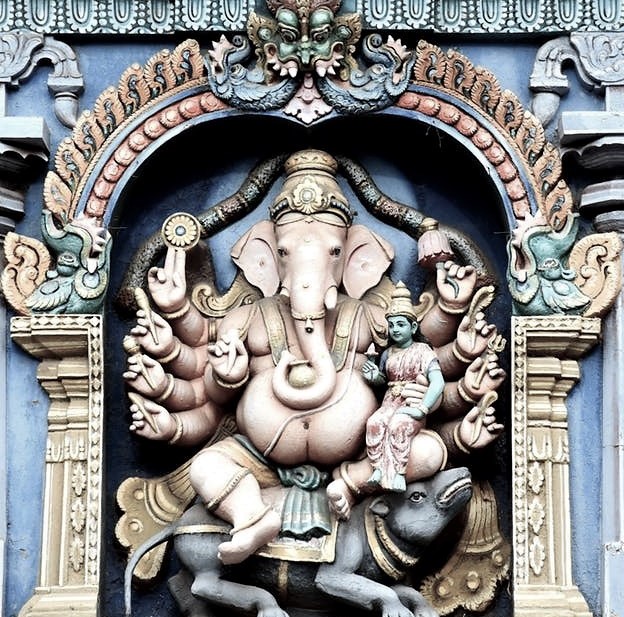- Special FeaturesFoundation Year1250Sthala TreeTheerthamRathamArchitectureKalingaOther Speciality
- Sthala Puran
It is believed that the temple was built by King Narasimhadeva I of the Eastern Ganga Dynasty in 1255 CE.
The temple is 35 km from Puri and 65 km from Bhubaneswar.
The name Konark derives from the combination of the Sanskrit words, Kona (corner or angle) and Ark (the sun), in reference to the temple which was dedicated to the Sun God Surya.
The temple was originally built at the mouth of the river Chandrabhaga, but the waterline has receded since then. The temple has been built in the form of a giant ornamented chariot of the Sun god, Surya.
According to the scriptures, Samba, the son of Krishna, was cursed with leprosy. He was advised by the sage, Kataka, to worship the sun god to cure his aliment. Samba performed penance for 12 years in Mitravana near the shores of Chandrabhaga. Both the original Konarak temple and the Multan temple have been attributed to Samba.
The current temple is attributed to Narasimhadeva I of the Eastern Ganga Dynasty. His reign spanned from 1238 to 1264 CE. The temple may have been a monument to his victory against Tughral Tughan Khan.
The cause of the destruction of the Konark temple is unclear and still remains a source of controversy. Theories range from natural damage to deliberate destruction of the temple in the course of being sacked several times by Muslim armies between the 15th and 17th centuries. This temple was called the "Black Pagoda" in European sailor accounts as early as 1676 because it looked a great tiered tower which appeared black. Similarly, the Jagannath Temple in Puri was called the "White Pagoda". Both temples served as important landmarks for sailors in the Bay of Bengal. The temple that exists today was partially restored by the conservation efforts of British India-era archaeological teams. Declared a UNESCO world heritage site in 1984, it remains a major pilgrimage site for Hindus, who gather here every year for the Chandrabhaga Mela around the month of February.
- Architecture
The temple follows the traditional style of Kalinga architecture. It is oriented towards the east so that the first rays of the sunrise strike the main entrance. The temple, built from Khondalite rocks, was originally constructed at the mouth of the river Chandrabhaga, but the waterline has receded since then. The wheels of the temple are sundials, which can be used to calculate time accurately to a minute.
It has twelve pairs of elaborately carved stone wheels that are 3 meters wide and is pulled by a set of seven horses (4 on the right and 3 on the left). The temple follows the traditional style of Kalinga architecture. It is carefully oriented towards the east so that the first rays of sunrise strikes the principal entrance. The temple is built from Khondalite rocks.
The original temple had a main sanctum sanctorum (vimana) which was supposedly 229 feet (70 m) tall.
Due to the weight of the superstructure (70 m tall) and weak soil of the area, the main vimana fell in 1837. The audience hall (Jagamohana), which is about 128 feet (39 m) tall, still stands and is the principal structure in the surviving ruins. Among the structures, which have survived to the current day, are the dance hall (Nata mandira) and dining hall (Bhoga mandapa).
- Alankar of Deity
- Prayers and BenefitsSpecial Vratas and PrayersOfferings to DeityStotras and Mantras
- Festivals
- Sodasha Upcharas
- Prasadhas
- Social ActivitiesAnnadhanMarriageEar BoringHead ShaveDanaasEducation FacilitiesSocial DrivesOther Activities
- Arjita Seva
- Tags

